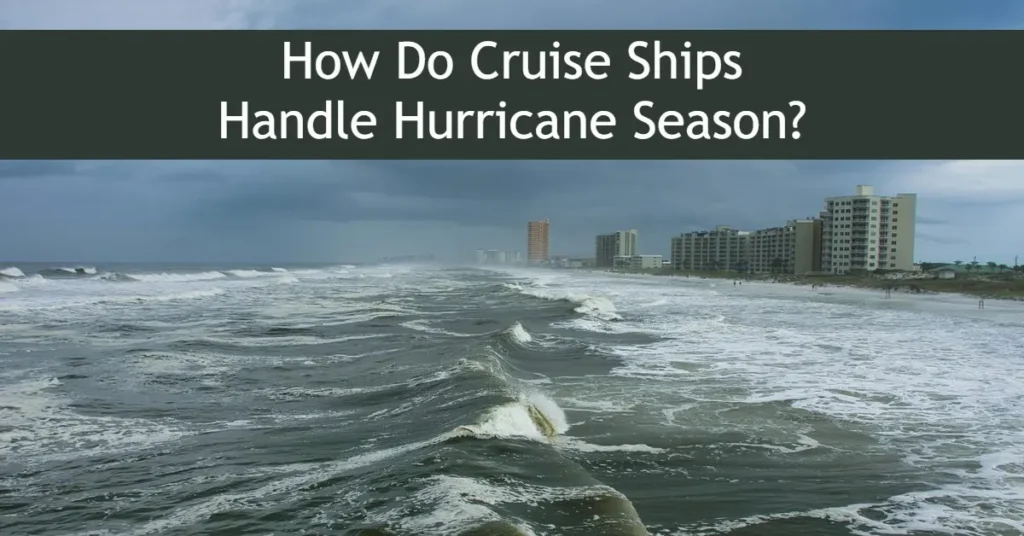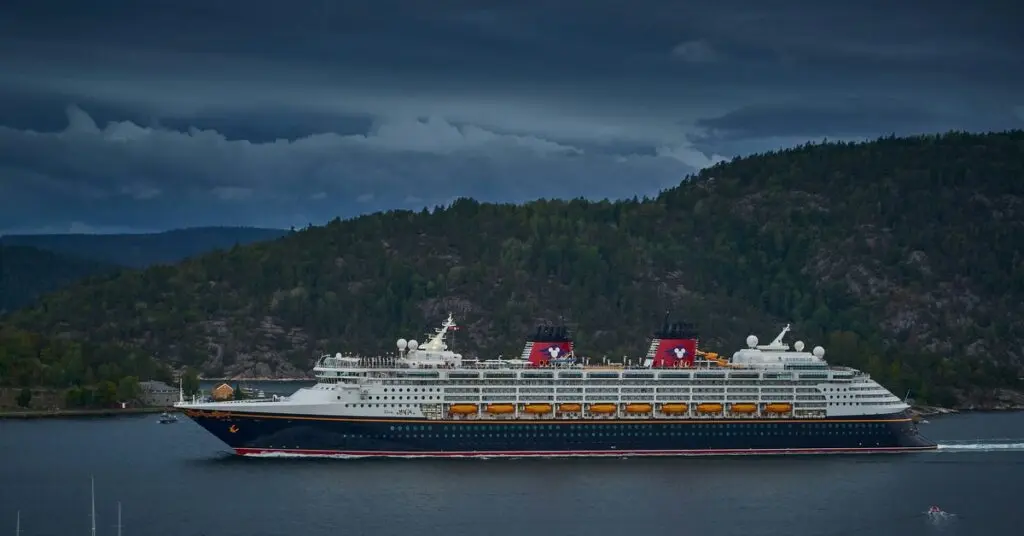Many view a ship as a floating paradise on the sea — a way to see the world from a new perspective, visit many tropical ports and truly escape the everyday. However, the weather has to be on board as well. A hurricane season cruise comes with risks. Storms can be terrifying, and the average person may feel inclined to reschedule or cancel their vacation instead.
Thankfully, modern cruise ships can handle a hurricane season cruise. Due to past experiences and new advancements, crews prove these boats operate well no matter the weather.

The Risks Hurricanes Pose
Hurricane season lasts from June to November, but cruises occur year-round. According to the Atlantic Oceanographic and Meteorological Laboratory, people have an 8% chance of experiencing a hurricane in Puerto Rico if they stay there for a whole month. Considering this is the worst-case scenario during that time frame, it’s doubtful to come across a hurricane when vacationing.
That’s not to say the cruise industry is complacent about these low chances. If anything, even a sliver of a possibility pushes ships to adhere to design regulations and create disaster response plans. These moves ensure safety against hurricanes.
Cruise Ship Safety Design Features
The cruise ship has various features that help mitigate the risks a hurricane can bring to the crew and its passengers. Each is subject to maintenance to ensure its functionality.
Ship Hulls
A ship hull helps improve the buoyant force of the vessel and keep it afloat. This feature is critical, as a hurricane can affect the waters a cruise ship is navigating. Powerful winds and rain can affect the ocean beneath and stir up currents a boat would not be prepared for.
Ideally, the hull is clear of any holes the water could enter through. Most cruise ships are fitted with two hulls. That way, even if the outer hull is breached with water, the inner one can prevent internal flooding in the boat.
Ship Stabilizers
Hurricanes also pose a general threat to the cruise ship’s stability. Luckily, there are also stabilizers for coping with tougher sea conditions when they turn up. Cruise ship stabilizers will either be passive or active in motion.
Passive stabilizers work during the usual currents of the ocean and can help prevent seasickness in regular situations. Active stabilizers counteract the stronger waves of a hurricane.
Fast Propulsion Systems
Cruise ships come with a propulsion system that helps the vessel move fast. This makes it possible to travel to many destinations quickly, while older variations took ages to get to even one. The average cruise ship can travel around 20 to 25 knots at the height of its performance.
A cruise ship’s speed fluctuates depending on its weight, design and performance. Weather conditions can be unpredictable during hurricane season. A speedy propulsion system can allow the captain and crew to navigate the vessel away from dangerous waters before reaching those areas.
Passenger Fall Prevention
Passengers fall from a cruise ship from intoxication or foul play. In a hurricane, an uncovered deck can get slippery and dangerous. There’s also the matter of strong currents and surges, causing a person to lose balance. Having fundamental design choices is essential to prevent people from going overboard.
For instance, windows are made of solid tempered glass that can hold a person’s weight without breaking. Ship balconies can offer beautiful skyline sights, but the railing and barriers must be around 42 inches in height to prevent sudden falls.
Technology for Mitigating Hurricanes
The construction of a cruise ship can withstand a hurricane, but it is not enough to guarantee safety. Many technological advancements can help with securing the journey against hurricanes.
Weather Monitors
Weather monitors are essential technology providing real-time updates regarding outside conditions. Authorities provide severe weather warnings to everyone. The cruise line will delegate bridge officers on deck and in the captain’s quarters to keep tabs on this.
Passengers can also rely on ship tracking apps. These programs are helpful tools that showcase their location and amenities on the vessel. They can also distribute weather condition updates while at sea, delivering transparency to patrons.
Satellite Communications
Communication is vital when mitigating hurricanes. While weather monitors can provide information, it takes time to disseminate those crucial updates. The Icon of the Seas is the largest cruise ship in the world — it’s 1,198 feet long with 20 decks. It can be nearly impossible to deliver pertinent information quickly.
Satellite communication enables the crew to speak to one another. This allows a quick delivery of commands to manage the ship during a hurricane. In a more extreme crisis, it allows the captain and crew to correspond with ports, stations and other boats for assistance and updates.

Route Planning Software
Most people may believe a cruise ship can manage hurricane season since its design is created with those conditions in mind. However, that couldn’t be farther from the truth. The captain and crew access route planning software that helps them pinpoint the safest route.
Captains will avoid bad weather and pick a route where the vessel and passengers will be much safer. Route planning software allows the boat to optimize its course. It can also help reduce mileage and conserve fuel, which is key in dire situations.
Surveillance System
Passengers will be given information regarding the unavailability of specific amenities or areas on a cruise ship. However, some may be unaware, while others directly defy directions given to them by the crew.
Surveillance cameras on cruise ships can help keep track of every single passenger. These are placed in common areas such as the decks, hallways and elevators. That way, the crew can verify that no one is heading into a restricted area and compromising their safety.
Hurricane Season Cruise Preparedness Plans
State-of-the-art design and technology can prepare cruise ships for a hurricane in theory, but it can be different in practice. A hurricane season cruise must employ other response plans to ensure the safety of every person on board.
Schedule Flexibility
Thousands of people book trips during hurricane season. As a result, cruise ships rarely cancel their journeys. At most, a cruise may delay its departure time to ensure safer conditions.
Some ships may also change the port from which they embark and arrive. During these gaps and changes, passengers may be able to cancel their booking at their discretion. Cancellation policies may differ among cruise lines.
Emergency Muster Drills
Cruise lines should have mandatory briefings so passengers understand safety procedures. While they’re there to have a vacation, they should be familiar with danger zones and gathering areas in case of emergencies.
Cruise ship passengers should also know where emergency life vests and boats are located. Rafts are present on the vessel to prioritize the life and safety of those on board. The ideal drill should showcase how to operate this equipment in a disaster.
Crew Response Training
A hurricane season cruise can cause panic among passengers, and crew members should be trained in keeping calm and managing the hordes of people. Each employee should be responsible for about three to four passengers, but it can vary depending on the size of the staff on board.
Crew response training should also include ship maintenance during hurricane season. The ship stabilizers’ control system and other parts need manual adjustments to stay stable throughout the rocky weather and waves.
Hurricane Response
Most cruise ships can foresee a hurricane with their weather monitors and satellite communication. There is a chance they may lose visibility due to the rain. In those events, the captains and crew will utilize their route optimization program to develop a new course as soon as possible.
From there, personnel will steer the boat away to ensure they are not navigating tricky waters and sparking more concerns. The main goal is to avoid the storm. This can cause sudden stopovers or skipped destinations due to an impromptu itinerary change.
Aftermath Impact on Cruise Ships
While cruise ships will not come into contact with hurricanes, there may still be a lasting impact in various forms.
Itinerary Changes
Some people book a cruise to see certain islands, so skipping them due to the hurricane can be upsetting. Cruise lines may refund port fees and other related expenses to the spot. They may offer this compensation through coupons or consumables on the ship.
Arrival Changes
Some cruises will have extensions or early exits during hurricane season. There may be times when the arrival ports are closed due to the weather or the path toward it being too dangerous for travel. In those cases, the boat will have to wait or reroute.
Medical Aid and Facilities
Despite the safety equipment and precautions in place, people can slip on a wet deck or otherwise be injured during a hurricane. Cruise ships have medical kits and facilities on board. Specialists can ensure the injury doesn’t get worse.
Psychological Support
Some passengers or crew members can feel shaken up after experiencing a hurricane at sea. It can be upsetting, even for people without a prior fear of cruise ships or hurricanes. It’s crucial to offer psychological support from a specialist on board to cope with the situation.
Cruise Ships Can Handle Hurricanes
Hurricanes are a fact of life, but they don’t have to ruin someone’s holiday at sea. Cruise ships are well-prepared to deal with these storms and ensure passengers get the most out of their journey, wherever it ends up taking them.
Frequently Asked Questions
How Likely Will Cruise Ships Get Into a Hurricane?
It is improbable for cruise ships to get into a hurricane. Even if a storm impacts a vessel, safety measures and technology are in place to help steer it to safer waters. Thus, a hurricane season cruise is safe to go on.
Can a Cruise Ship Get Canceled Because of a Hurricane?
The chances of a cancellation are slim to zero. The most a passenger may expect from their cruise line are announcements of changes in embarkation details.
Are Cruise Ships Sturdy Enough for Hurricanes?
Cruise ships can withstand wind and water damage that hurricanes may inflict. They also have a high speed, allowing them to outrun and evade slower-moving storms.
What Technology Is on Cruise Ships for Hurricanes?
Cruise ships have route planning software, satellite communications, weather monitors and surveillance systems for safety during hurricane season. These are used throughout the cruise’s journey.
What Happens When a Cruise Ship Comes Across a Hurricane?
A cruise ship that detects a hurricane will redirect its course to avoid harsh conditions and venture into safer waters. Itinerary changes or extensions may occur until the boat concludes its journey.
- The Push to Reduce Cruise Ship Carbon Emissions in 2024 – July 19, 2024
- Marine Satellite Internet: How Ships Keep Connected – July 10, 2024
- What to Wear on a Boat – June 24, 2024




Leave a Reply